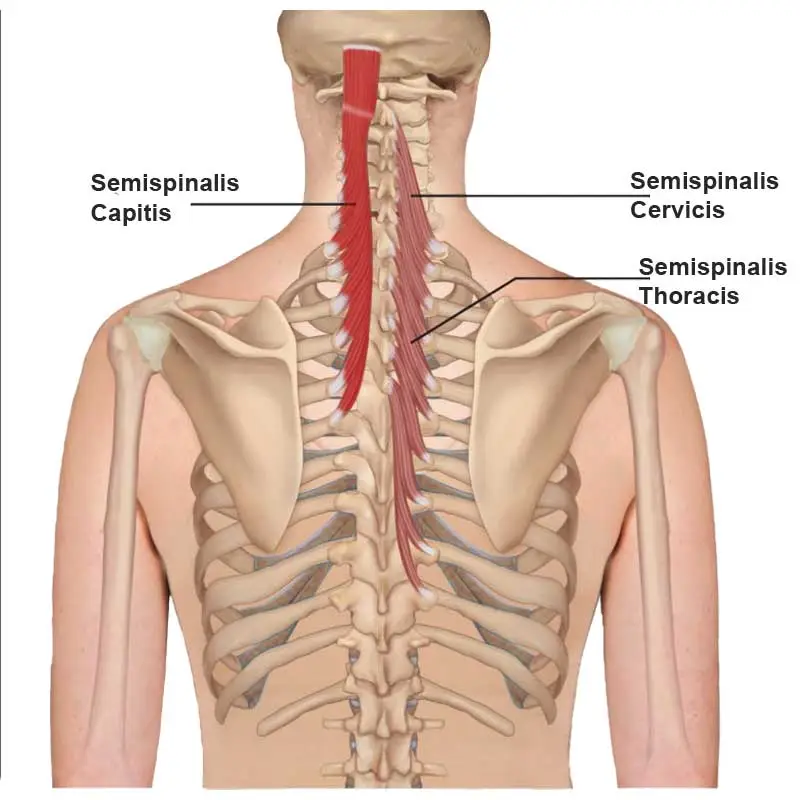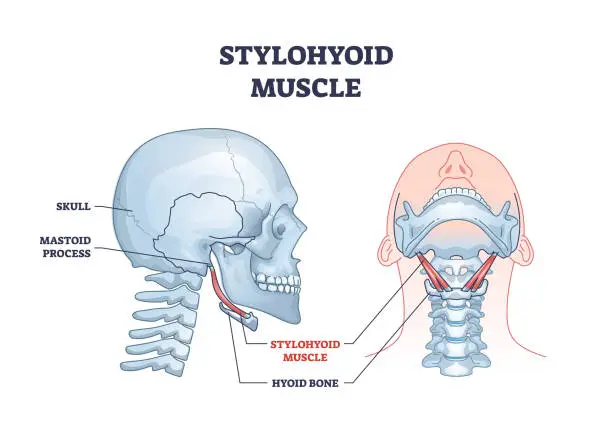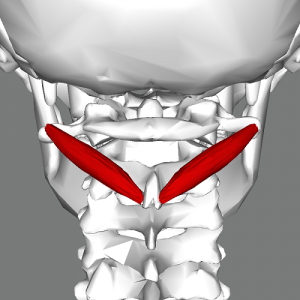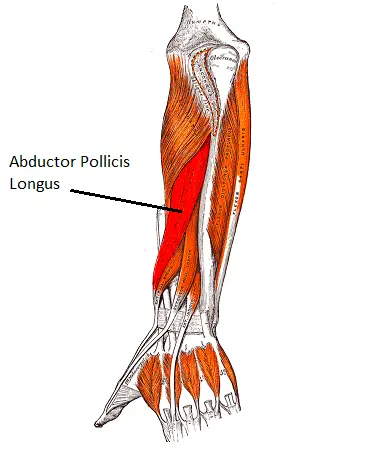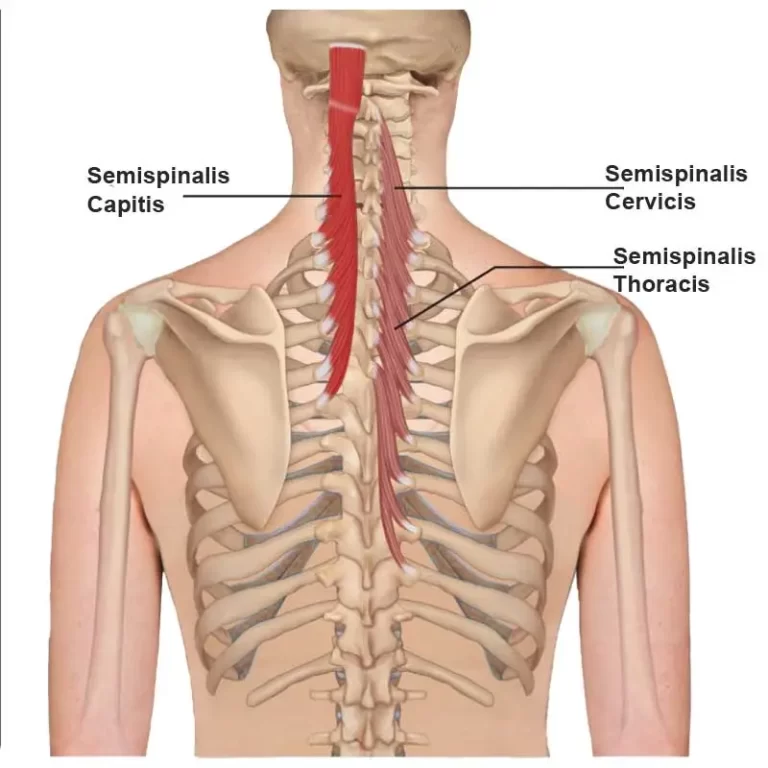Semispinalis Cervicis
Introduction
Semispinalis Cervicis belongs to the semispinalis group of the muscle, which in turn is part of the Transversospinal group of muscles (It is formed of muscles between a spinous process and the vertebrates transverse process below).
The semispinalis muscles have the longest fascicles of the transversospinalis group of the muscles, spanning six segments. The muscles in this group include the semispinalis capitis, semispinalis cervicis, and semispinalis thoracis muscles.
Origin:
The Semispinalis Cervicis muscles originate from the transverse processes of T1 to T6, articular processes of the 4th to 7th cervical vertebrae
Insertion:
The Semispinalis Cervicis muscles insert into the Spinous processes of C2 to C5
Nerve supply:
The nerve supply of the Semispinalis Cervicis muscles is the dorsal rami of cervical spinal nerves.
Blood supply:
The blood supply of the Semispinalis Cervicis muscles is the deep cervical artery
Action:
Acting bilaterally: extension of the cervical spine
Acting unilaterally: lateral flexion of the neck and rotation to the neck’s opposite side.
The Common conditions that affect the neck muscles which include:
- Semispinalis Cervicis Spasms: Spasms also known as muscle cramps, muscle spasms occur when a muscle contract and can’t relax. Most spasms are short, lasting only for a few seconds. But you might have a sore or stiff neck afterward.
- Semispinalis Cervicis Strains: A muscle strain is an injury to the muscle or the tendon. It occurs due to overstretching or tearing the muscle fibers.
- Whiplash: If your head suddenly moves forward and then whips backward, you can injure the soft tissue in your neck. Whiplash usually involves the muscles, ligaments, and tendons.
Exercise for the Semispinalis Capitus muscle
Chin tuck exercise
Sit straight and look straight ahead with the ears directly over the shoulders.
Place a finger on the chin.
Without moving the finger, pull the chin and head straight backward until a good stretch is felt at the base of the head and top of the neck.
Hold for 5 seconds if possible.
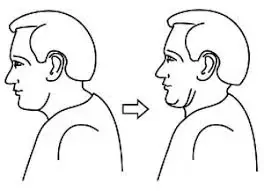
Semispinalis Cervicis muscle stretch
The semispinalis Cervicis muscle(of the transversospinalis group) is stretched by flexing the head and neck at the spinal joints. Adding in lateral flexion (not seen in the accompanying illustration) will increase the efficacy of the stretch for the opposite-side semispinalis capitis muscle.
Self-Stretching
Patient position and procedure: Supine or sitting. Instruct the patient to nod the head, bringing the chin toward the larynx until a stretch is felt in the suboccipital region. Putting light pressure under the occipital area with the palm of your hand while tipping the patient’s head forward reinforces the motion.
FAQs
Semispinalis cervicis serves as a support for the head and neck extensors’ ability to extend the head at the neck when they contract bilaterally. On the other hand, its unilateral contraction helps the same muscles complete the contralateral rotation of the thoracic, cervical, and head spines as well as the ipsilateral lateral flexion of these same joints.
The semispinalis cervicis, also known as the semispinalis colli, is inserted into the cervical spinous processes from the axis to the fifth cervical vertebra, inclusively, by a series of tendinous and fleshy fibers that originate from the transverse processes of the upper five or six thoracic vertebrae.
The Semispinalis capitis muscle is typically harmed by a head injury or whiplash from a car accident. The sensation of discomfort at the back of the head and neck is the sign of an injury to this region that is felt the most frequently.
A deep back muscle is the semispinalis. It can be separated into thoracic, cervicis, and capitis depending on its superior attachments.

